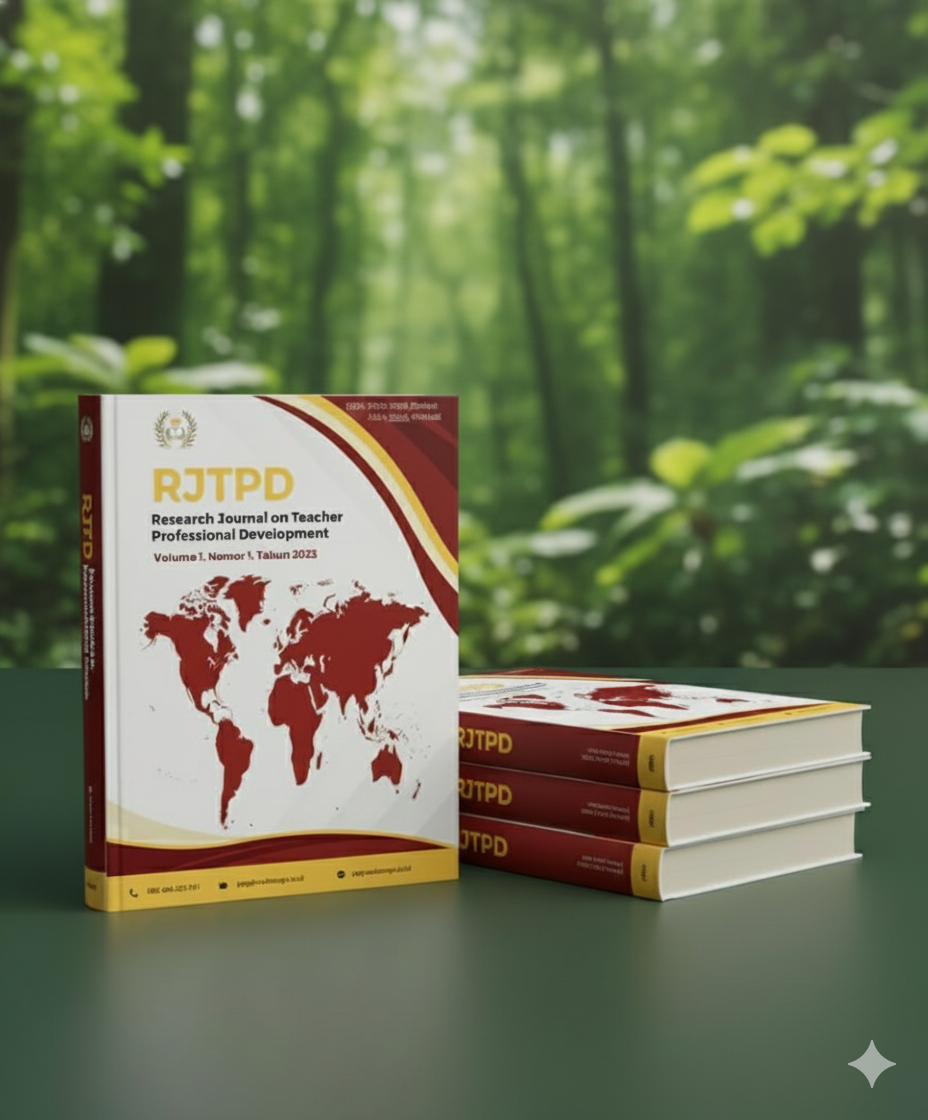Cover

Author Guidelines
The Research Journal on Teacher Professional Development (RJTPD) journal is a means to publish various research results in education and learning in the realm of early childhood education, basic education, secondary education, and higher education. It is hoped that various research results and scientific studies published can contribute to the development of science, technology, and the arts in order to support the realization of professional educators.
The Journal operates a single-blind peer-review process. To facilitate this process, the author’s names (without academic titles), institutional affiliations, and the email address of the corresponding author should appear only on a detachable cover sheet.
Articles should be written in American English in single space, using Microsoft Word, font size 11, Calibri, top, and bottom 3 cm, left and right margin 2.5 cm, printed in A4.
Insert a header on an even page indicating the name of the Journal, Volume, Number, month, and year, and page number of the publication by using the article template.
The page number should be inserted at the footer, placed on the right for odd numbers, and on the left for even numbers.
The paper should be submitted by the author via e-mail and online submissiom to Research Journal on Teacher Professional Development (RJTPD) Online Journal System (OJS) by signing in RJTPD as the author in https://journal.walisongo.ac.id/index.php/rjtpd/about/submissions#onlineSubmissions. The content of the article should not be submitted simultaneously to another journal.
The title should be simple, readeable, concise, informative, creative and attract reader. The title consisting of a maximum of 100 characters (including spaces) for running headers should also be provided. The title is typed in bold, use capital letters for each beginning of a word, except for conjunctions and prepositions. It should be use font Book Antiqua (13pt).
A list of all authors, as well as corresponding addresses, and e-mail address should be provided. Addresses should contain all information necessary for an effective mail delivery. E-mail should also be provided to speed up communication between readers and authors. This information will be published unless authors request otherwise. It should be use font Book Antiqua (11pt).
An abstract should accompany each manuscript; it should be completely self-consistent (i.e., with no figure, table, equation or reference citations), not exceeding 200 words, containing the importance of the topic, the gap between theory and practice or between reality and expectation, or lacks studies, objectives of the present study, method, findings, and conclusion and written as a single paragraph. It should be use font Calibri (10pt).
Keywords contains basic words in the study, can be drawn from the research variables, characteristics of the subjects, and the theory of the referenced (minimum three words or combinations of words, written in alphabetical order).
The body of paper must range between 6000-9000 words, written in Calibri (12pt). It could be divided into sections. Sections should be bold. Subsections should be italic. Use hyphens consistently and avoid unnecessary ones. All terms or titles in Arabic should be transliterated with following the Library of Congress guide. Name of person should not be transliterated.
The introduction should consist of the background of the study, research contexts, and research objective. All introductions should be presented in the form of paragraphs, not pointers, with a proportion of 20-35% of the whole article length. It also discusses the problem, the most important gaps by including previous research, research questions, hypotheses and literature review preferebly within the last 10 years.
Method contains the identification of the variables, the research subjects, research instruments, research design, data sources, data collection and methods of research including used data analysis techniques with a proportion of 10-15% of the total article length. It also provides background information about the academic setting in which the study has been conducted.
Results show exposure data analysis, consisted of descriptive statistics, test results of the assumptions and results of hypothesis testing are presented sequentially or integrated with a proportion of 15-20% of the total article length. Use only horizontal lines when using tables. Put table number and the title of the table with italic style on top of it.
Discussions contain an explanation of the results of research associated with the results of previous studies, critically analyzed and linked to relevant recent literature. It should be written with a proportion of 20-30% of the total article length.
It answers from the research objectives written concise, clear, and compact based on the results of research and discussion. It should be written with a proportion of 5-10% of the total article length. It also contains the shortcomings of the research, and also recommendations for future research.
The author is responsible for ensuring that every reference in the article is included in the reference list, and vice versa. It is not recommended to use references from Wikipedia, personal blogs or other non-scientific sites. All notes must be cited, using APA Style (American Psychological Association).
Writing of Bibliography
Bibliography is written based on the All notes must be cited, using APA Style (American Psychological Association).
Cover

Important Tolls




Publisher:
Fakultas Ilmu Tarbiyah dan Keguruan UIN Walisongo Semarang
Jl. Prof. Dr. Hamka, Ngaliyan, Kec. Ngaliyan, Kota Semarang, Jawa Tengah 50185
Phone: +62 882-0070-87305
e-mail: [email protected]
